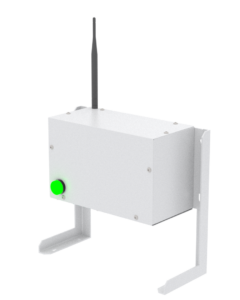
What is AGV?
Automated Guided Vehicle or AGV was first introduced by Arthur “Mac” Barrett in 1953. The earliest version of an AGV was a modified tow truck which followed a wire under the floor, allowing it to move and navigate by itself.
Automated Guided Vehicle are used to move things around in the plant facility repetitively. Since its invention, AGVs have been improved to allow it to use alternative guidances such as coloured tape, induction or magnetic tape embedded on the floor plant. However, the AGVs still follow a fixed route, and any route change will require reinstallation of the guidance system. Besides, an AGV is equipped with sensors to detect any obstacles that pop up along its route. To avoid hitting the obstacles, the AGV will slow down or stop moving and alert users by sounding its alarm. It will not be able to change its route or direction.
What is AMR?
AMR stands for Autonomous Mobile Robot. It is a wheeled robot that moves autonomously. Both AMR and AGV share the same functions – moving items from place to place. Sometimes these robots are also called industrial mobile robots. For nearly half a century, AGVs have been moving things around in factories, warehouses and places where material transporting is needed. However, they are challenged by the introduction of new technologies implemented by the AMRs, especially in the demand of achieving Industry 4.0, factory automation and smart manufacturing.
The greatest advantage of AMR over AGV is that AMR provides alternative navigation options. An AMR navigates using a predefined map and plans its own routes to the destination. It can detect obstacles similar to an AGV, but it is slightly smarter because it can avoid the obstacles by navigating around it. Therefore, AMR robot is considered more flexible because it can change its path dynamically with less effort. Meanwhile, an AGV is always “guided”, which means that the AGV operates on a fixed route – usually running along magnetic paths or wires. This shows that there are more possibilities for the AMR to perform better in running its job since space limit is not an issue.
Although an AMR robot is sometimes perceived to be much more costly compared to an AGV, in reality, the AMR could be more cost effective due to its flexibility and ease to set up.
The AMR’s main components include the controller board, computing unit, battery, motors, sensors and camera. It also requires some electronic integration including the safety system, drive system, power switch and warning lamp. Another important and often-overlooked component is the software which acts like the brain for the robot. The software allows users to program and interact with the AMR, besides allowing it to move autonomously. For example, DF uses our in-house NavWiz (or Navigation Wizard) software as the brain to run the whole AMR.
AGV vs AMR – what is the difference?
AMR and AGV have been defined differently by various sources. Technically, AGV always refers to a guided vehicle because its navigation is based on physical guides such as coloured tape, magnetic tape and induction wire, while AMR is a mobile robot that plans its own route based on the map which it had created earlier.
In short, both AGV and AMR are similar in terms of their features and functions in supporting logistics activity. This is because both AGV and AMR can autonomously travel in the manufacturing plants and warehouses after being programmed without needing any assistance from humans. By definition, “autonomous” describes the capability of the device acting alone or independently, while “automated” indicates control or operation by a machine or an automatic equipment. This shows that both AGV and AMR have similar meanings, yet they are introduced with different names. The only difference is the ‘navigation technique’ used by AGV and AMR in moving them autonomously.
The usage of the term ‘AGV’ and ‘AMR’ somehow have given some implications on the custom duty when these robots are being imported to certain countries. The word ‘vehicle’ in AGV may mislead the custom officer into thinking AGV is a ‘vehicle’ or ‘car’ which normally has higher custom duty compared to a robot.
Author by: Noor Atikah Soleha Mad Alim I Ken Wong I Muhammad Sofwan Bin Zamri





















